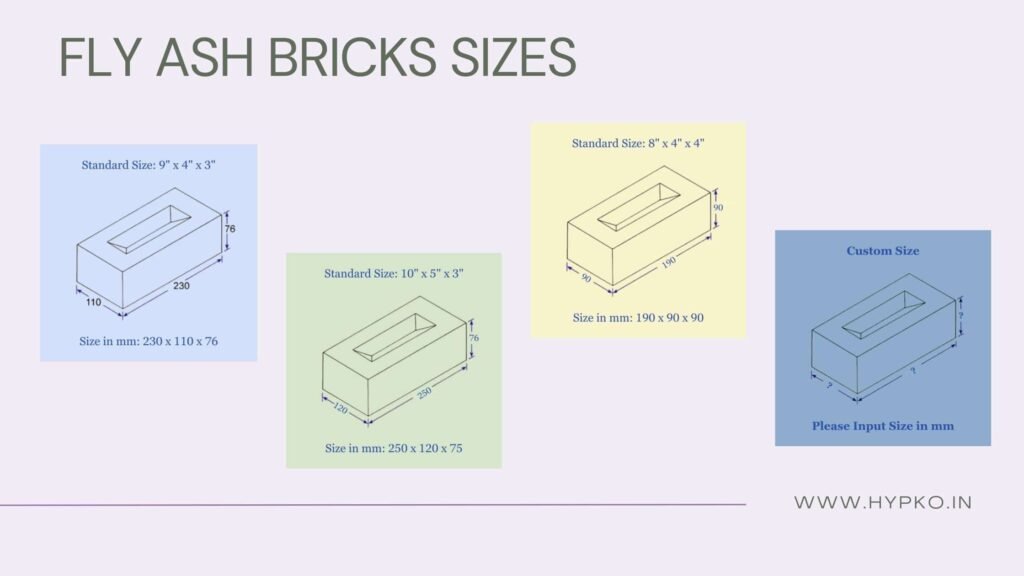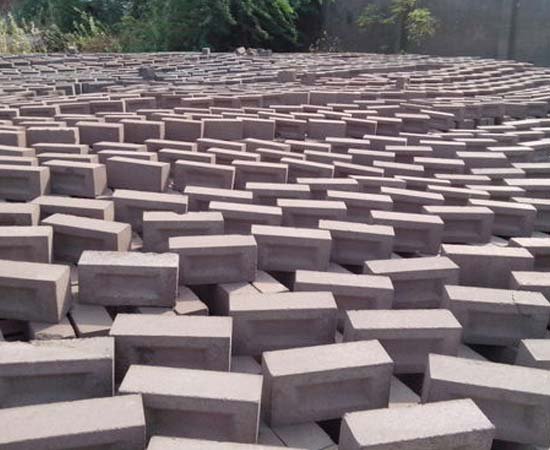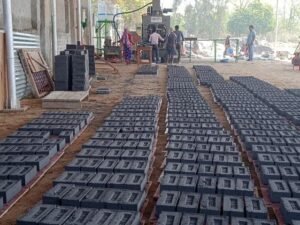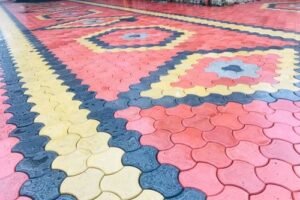Table of Contents
Introduction to Fly Ash Bricks
Fly ash bricks are not just another brick in the wall; they represent a sustainable future in construction. Originating from the residual ash of burned coal, these bricks have transformed the way we think about building materials. This article guides you to select perfect fly ash brick size for your projects.
History of Fly Ash Bricks
Before diving into the dimensions, it’s crucial to understand their roots. Fly ash bricks’ invention wasn’t just for construction but also an answer to the growing environmental concerns.

Fly Ash Brick Sizes
Bricks come in various shapes and sizes, but when it comes to fly ash bricks, there are specific standards.
Standard Size
The typical size measures around 230mm x 110mm x 70mm. This size is generally used in most residential and commercial structures.
Modular Size
A tad smaller than the standard, modular ones measure around 190mm x 90mm x 90mm. They’re ideal for spaces that need more intricate designs.
Jumbo Size
These are the giants of the fly ash brick family, measuring around 250mm x 120mm x 75mm. Best for projects that require more significant coverage with fewer bricks.
Custom Size
For those unique projects, custom sizes can be manufactured to fit specific needs.
Advantages of Using Fly Ash Bricks
Beyond their sizes, these bricks bring numerous benefits like being lightweight, having high compressive strength, and being environmentally friendly.
Comparing Fly Ash Bricks with Traditional Bricks
Size-wise comparison
While traditional bricks might vary wildly in size, fly ash bricks maintain consistent dimensions, ensuring better construction quality.
Durability and Strength
Thanks to their manufacturing process, fly ash bricks often outshine their traditional counterparts in terms of durability and strength.
How Size Affects Construction Quality
Size matters! A consistent brick size ensures seamless stacking, less mortar use, and a structurally sound building.
Environmental Benefits of Fly Ash Bricks
By recycling industrial waste, fly ash bricks help reduce carbon emissions, making them a green choice for builders.
Challenges in Working with Various Sizes
From transportation to laying them down, each size brings its set of challenges that builders must be aware of.
Popular Brands and Size Offerings
Several brands cater to various size demands, with some even offering customizable solutions.
Cost Factor: Size vs. Value
While jumbo-sized bricks might seem costlier, they might bring down labor costs, balancing out expenses.
Future of Fly Ash Bricks and Size Innovations
As sustainability takes center stage, we can expect more size innovations catering to diverse building needs.
How to Choose the Right Size for Your Project
Your project’s nature, budget, and design can guide your choice of brick size. Always consult with an expert!
Safety Precautions When Handling Different Sizes
From wearing protective gear to ensuring proper stacking, safety is paramount when dealing with bricks of any size.
Conclusion: The Importance of Size in Construction
Fly ash bricks, with their varied sizes, bring versatility, strength, and sustainability to construction. By understanding the significance of each size, builders can craft structures that aren’t just durable but also eco-friendly.
For more detailed information please click here.
FAQs
- What makes fly ash bricks environmentally friendly?
- Fly ash bricks utilize industrial waste, reducing the carbon footprint and waste in landfills.
- Are fly ash bricks more expensive than traditional ones?
- While the initial cost might be higher, the long-term benefits like durability and reduced mortar use might balance it out.
- Can I request custom-sized fly ash bricks for my project?
- Yes, several manufacturers offer customizable size solutions based on project requirements.
- How long do fly ash bricks last?
- With proper care and usage, they can last as long, if not longer, than traditional bricks.
- Are there any special mortars needed for different brick sizes?
- Generally, the same mortar can be used. However, due to the reduced need with consistent sizes, you might end up using less.
Sources:
https://law.resource.org/pub/in/bis/S03/is.3812.1.2003.pdf
https://rdso.indianrailways.gov.in/works/uploads/File/Fly%20Ash%20Brick%20(1).pdf




